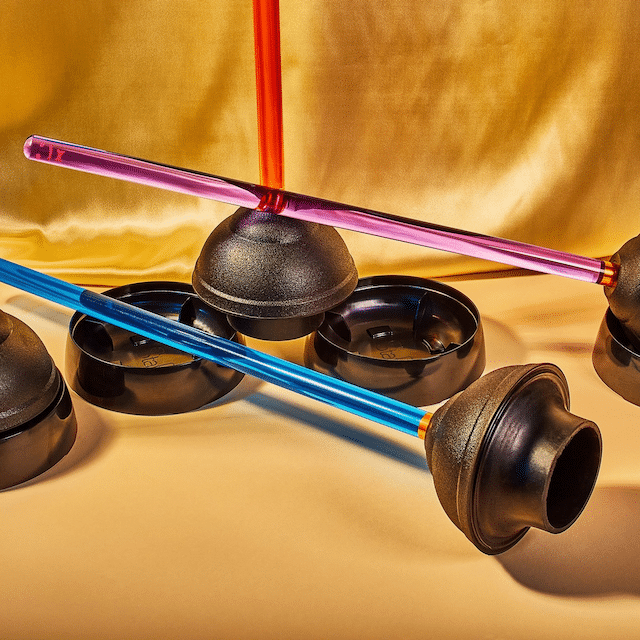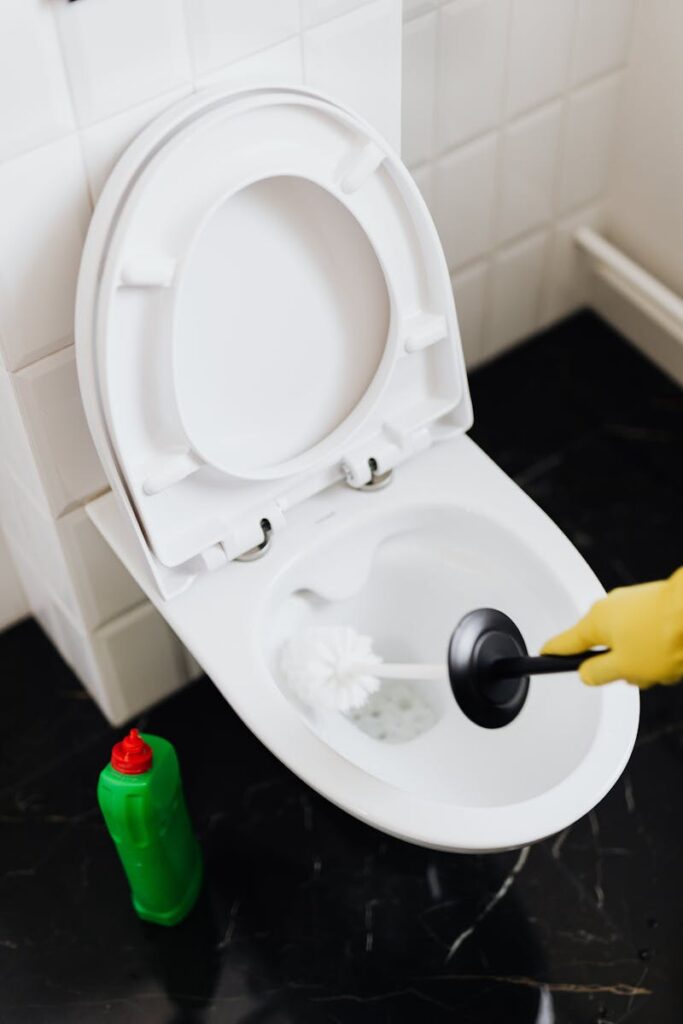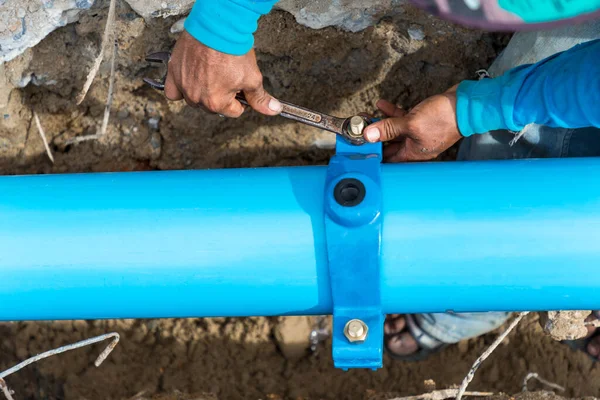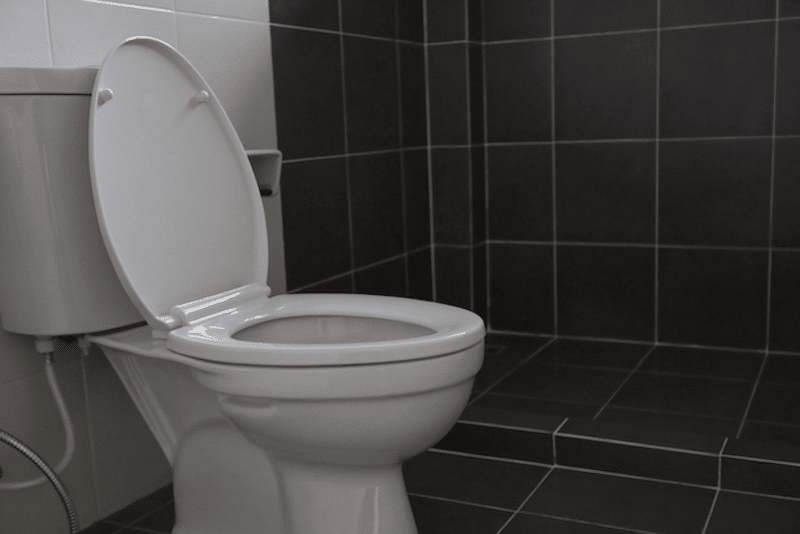When it comes to the tools every homeowner should have on hand, a toilet plunger ranks high on the must-have list. This simple yet powerful tool can save you the headache (and cost) of a plumber visit by helping to dislodge clogs and keep your plumbing systems flowing smoothly.
Plungers are also an effective, inexpensive solution for resolving common plumbing issues. But not all plungers are created equal, and knowing how to choose the right one for your home can make all the difference.
This guide will walk Maryland homeowners through the types of plungers available, key features to look for, how to maintain them, and solutions to common issues, ensuring you’re well-equipped for any plumbing emergencies. It’s important to plan to have different types of plungers for various clogs, such as a sink and a toilet plunger.
Schedule Service Online
Get a free estimate so you know what you're signing up for
"*" indicates required fields
For Emergency Services Call: 410-255-9300
Introduction to Toilet Plungers
Toilet plungers are essential tools for every household, designed to unclog toilets and other drains. A plunger works by creating suction and pressure to dislodge clogs, making it an easy way to solve a common problem. The rubber cup of a plunger is sealed down over the drain opening, and the handle is moved up and down to create the necessary force.
With various types of plungers available, it’s crucial to choose the right one for your specific needs, considering factors such as the type of drain, the size of the clog, and the desired level of suction and pressure.
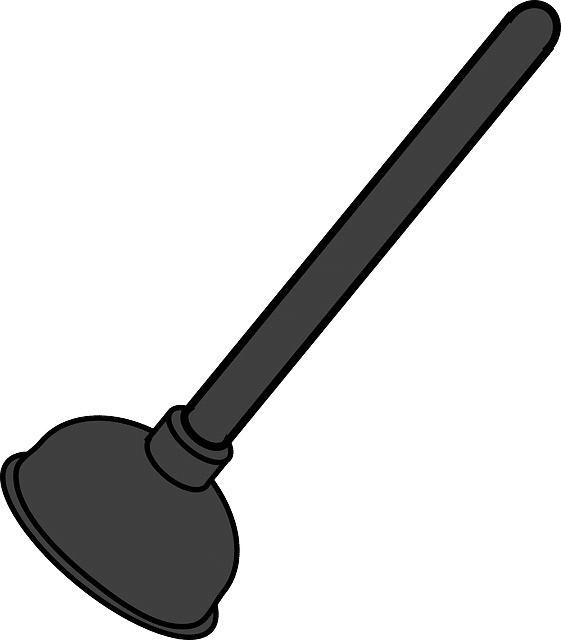
What Exactly Is a Toilet Plunger?
A toilet plunger is a straightforward yet indispensable tool for addressing clogged drains and toilets. When used properly, it generates suction and pressure to dislodge clogs within the pipes, allowing them to continue through the drain pipes and enabling water to flow freely once more.
Plungers are often paired with other tools, like drain snakes or augers, for more stubborn clogs. Their simple design and effectiveness make them a trusted solution for both homeowners and plumbing professionals.
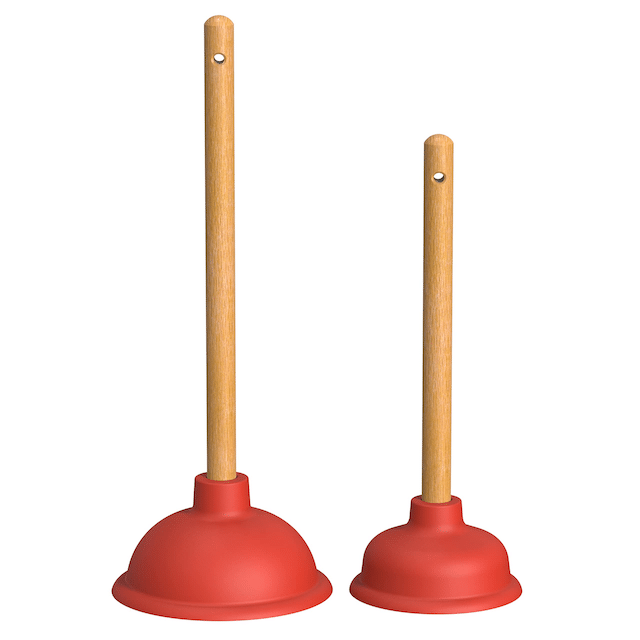
Types of Toilet Plungers
There’s no one-size-fits-all plunger; different designs are tailored for specific types of plumbing systems and uses. The design of the plunger’s end is crucial for optimal performance, as a well-designed end enhances suction and effectiveness when clearing clogs.
Additionally, the form of the plunger, including its physical design and functional attributes, plays a significant role in its overall efficiency. Here’s a rundown of the main types:
1. Cup Plungers
Standard design with a flat rubber cup.- Best for sinks, showers, and tubs, as it creates a seal over flat surfaces.
While cup plungers are designed for flat surfaces, they can be used in a pinch for toilets.
2. Flange Plungers
Features an additional rubber flange that extends from the cup.
Designed specifically for toilets, as the flange fits snugly inside the toilet drain to create an airtight seal. The design of the end of the flange plunger is crucial for optimal suction and effectiveness, as a well-designed end ensures better performance when clearing clogs.
3. Accordion Plungers
- Made of hard plastic with an accordion-style design for more force. The range of force that accordion plungers can produce makes them suitable for various clogging issues.
- Effective for tough toilet clogs but harder to use due to its rigid structure.
4. Electric Plungers
High-powered and ideal for stubborn clogs that manual plungers can’t tackle. Requires more maintenance and care but delivers superior results for larger jobs. When considering an electric plunger, it’s important to evaluate the price and ensure that the purchase aligns with your needs, especially for those who prioritize efficiency and sustainability.
Choosing the right plunger depends on the types of drains in your home and the severity of your clogging issues.
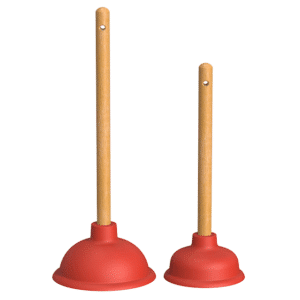
Key Features to Look For in a Plunger
A good plunger is more than just a rubber cup and a handle. Here are the features to consider when purchasing one:
Quality Rubber Cup
The cup should be made of durable, flexible rubber that creates a tight seal against your toilet or sink surface. This ensures maximum pressure is applied when unclogging.
Sturdy Straight Handle
A plunger with a solid handle offers better control and leverage when creating suction. Materials such as wood or plastic offer different levels of durability and grip.
Size and Fit
Ensure the plunger fits the specific type of drain it’s intended for. A flange plunger, for example, is perfect for toilets, while a cup plunger works better on flat surfaces like sinks.
Ergonomic Design
Handles with an ergonomic grip reduce strain during use, making the process more comfortable.
Ease of Cleaning
Look for a design that allows for easy cleaning and disinfecting. Some plungers come with drip trays to prevent messes.
Plunger Design and Handle
A standard plunger typically features a straight handle and a rubber cup, which can be used on sinks and toilets. However, for toilets, a plunger with a flange or a fold-out flap is more effective, as it can create a tighter seal around the drain opening. The design of the plunger handle is also important, as it should be comfortable to hold and easy to maneuver.
Some plungers come with additional features, such as a drip tray or a sanitary cover, which can make them more convenient to use and store. When choosing a plunger, consider the quality of the materials, the design of the handle, and the effectiveness of the rubber cup in creating a seal.
Buying a Toilet Plunger
When buying a toilet plunger, there are several factors to consider. First, think about the type of drain you need to unclog and the size of the clog. Then, consider the material and quality of the plunger, as well as the design of the handle and the rubber cup. It’s also important to read reviews and compare prices to find the best option for your needs.
Additionally, consider the buying options available, such as purchasing a plunger with a holder or a drip tray, which can make it easier to store and use. Some popular brands, such as Korky and Simplehuman, offer high-quality plungers with advanced features, such as ergonomic handles and powerful suction.
By doing your research and comparing different models, you can find the perfect plunger for your home and ensure that you’re prepared to handle any clogs that may arise.
Plunger Maintenance and Care
To extend the life of your plunger and ensure it remains effective, proper maintenance is key. Here’s how to care for it:
Clean Regularly
After each use, clean your plunger using bleach or a disinfectant solution to remove debris and bacteria. Rinse thoroughly with water.
Store Properly
Keep your plunger in a dry area, away from direct sunlight, to prevent rubber degradation. Using a storage cover or holder can keep it clean and minimize drips.
Inspect for Wear and Tear
Check for cracks or damage to the rubber cup or handle. Replace the plunger if it shows signs of deterioration. Maintaining the form of the plunger, including the folding flap, is crucial for ensuring its suction capability and overall effectiveness over time.
Regular maintenance not only ensures your plunger is ready to tackle clogs but also minimizes odors and hygiene concerns.
Common Plunger Problems and Solutions
Even the best plungers can encounter problems. Here’s how to address some common issues:
Rubber Cup Damage
Over time, the rubber cup may crack or lose its flexibility, reducing suction. Replace the cup or the entire plunger to restore effectiveness. Damage to the end of the plunger can also affect performance; ensure the end is intact and replace it if necessary to maintain optimal suction.
Stuck or Clogged Plunger
If debris gets stuck inside the plunger, clean it thoroughly with hot water and disinfectant.
Ineffective Suction
This is often caused by an improper seal. Ensure the cup fits snugly over the drain or toilet bowl and apply consistent pressure.
Troubleshooting and Repair
When facing a stubborn clog, a plunger might not always do the trick on its own. It’s important to have a plan for dealing with these situations, which may include using additional tools like drain snakes. Here are a few troubleshooting tips:
Check for Blockages
Inspect the drain to identify any visible blockages that may be preventing proper suction.
Use a Drain Snake
For more persistent clogs, pair your plunger with a drain snake to clear blockages deep within the pipe.
Consult a Professional
For complex plumbing issues, seeking help from a professional plumber can save time and prevent potential damage to your system.
Safety Precautions When Using a Plunger
While using a plunger is generally straightforward, it’s important to follow safety guidelines to avoid accidents:
Wear Protective Gear
Use gloves and goggles to protect yourself from splashes and contamination.
Avoid Excessive Force
Applying too much pressure can damage your pipes or cause water to splash.
Follow Manufacturer Instructions
Ensure you’re using the plunger as intended for safe and effective results. Trust the manufacturer’s instructions to ensure the plunger performs well, especially in moments of need.
Top Products and Brands for Residential Toilet Clogs
When dealing with a clogged toilet at home, choosing safe and effective products is essential. Below is a list of the top six products and brands recommended for clearing residential toilet clogs. Each product is trusted for its reliability and ease of use, with links provided for convenient purchasing.
- Green Gobbler Drain Clog Dissolver: A powerful yet eco-friendly solution that breaks down clogs efficiently without damaging pipes. Purchase Green Gobbler here
- Drano Max Gel Clog Remover: A thick gel formula designed to cut through standing water and attack tough clogs directly. Purchase Drano Max Gel here
- RIDGID Power Spin Drain Cleaner: A versatile, hand-held tool with a spinning cable system that provides a mechanical solution to stubborn clogs. Purchase RIDGID Power Spin here
- Liquid-Plumr Full Clog Destroyer: A trusted liquid solution that works on various types of clogs, including those caused by hair or grease. Purchase Liquid-Plumr here
- OXO Good Grips Toilet Plunger with Holder: A high-quality plunger with an ergonomic design for effective manual clog removal and convenient storage. Purchase OXO Toilet Plunger here
- FlexiSnake Drain Weasel Sink Snake Cleaner: Ideal for smaller obstructions, this tool features a rotating wand and disposable wand heads to easily clean out compact clogs. Purchase FlexiSnake Drain Weasel here
These products and tools are safe for residential use and offer a variety of options, from chemical solutions to mechanical tools, ensuring there’s a solution for every household need.

Strengthen Your Plumbing Arsenal
A quality toilet plunger is an absolute necessity for any homeowner. There is a wide range of plunger options available, each varying in quality, height, and design.
Making an informed purchase ensures you select the right tool for your needs. By knowing the different types, understanding key features, and maintaining your tool properly, you can tackle clogs confidently and keep your plumbing system in top shape.
Need help with a stubborn clog or deeper plumbing issues? Schedule professional plumbing services today and rest assured your home is in expert hands.
Conclusion
In conclusion, toilet plungers are a necessary tool for every household, and choosing the right one can make all the difference in effectively unclogging drains. By considering factors such as plunger design, handle comfort, and rubber cup quality, you can find a plunger that meets your needs and provides reliable performance.
Whether you’re looking for a standard plunger or a more advanced model with additional features, there are many options available to suit your budget and preferences.
Remember to always use your plunger properly, with the correct amount of suction and pressure, to avoid damaging your plumbing systems. With the right plunger and a little practice, you’ll be able to easily dislodge clogs and keep your toilets and sinks flowing freely.

